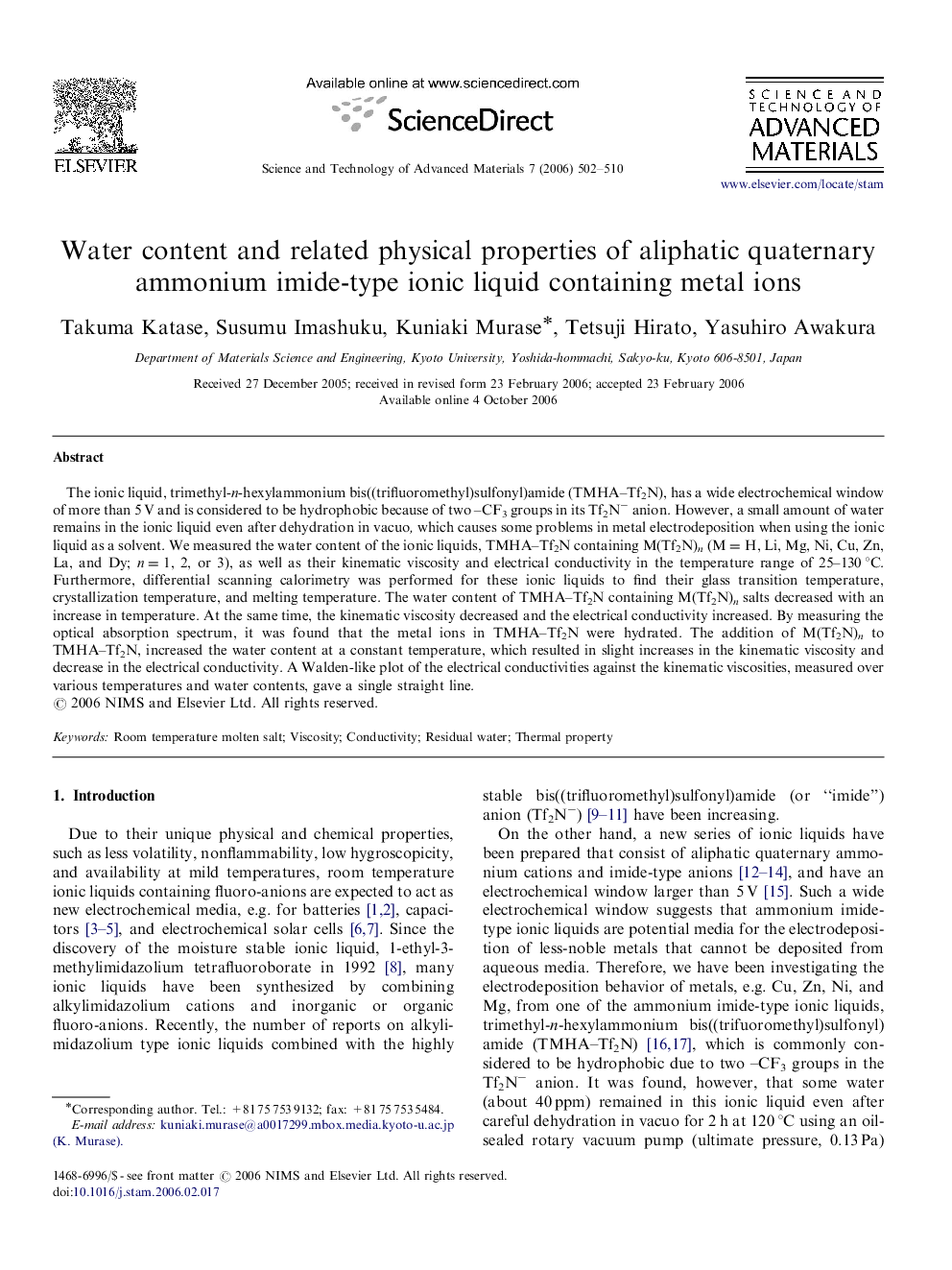| Article ID | Journal | Published Year | Pages | File Type |
|---|---|---|---|---|
| 1590970 | Science and Technology of Advanced Materials | 2006 | 9 Pages |
Abstract
The ionic liquid, trimethyl-n-hexylammonium bis((trifluoromethyl)sulfonyl)amide (TMHA-Tf2N), has a wide electrochemical window of more than 5 V and is considered to be hydrophobic because of two -CF3 groups in its Tf2Nâ anion. However, a small amount of water remains in the ionic liquid even after dehydration in vacuo, which causes some problems in metal electrodeposition when using the ionic liquid as a solvent. We measured the water content of the ionic liquids, TMHA-Tf2N containing M(Tf2N)n (M=H, Li, Mg, Ni, Cu, Zn, La, and Dy; n=1, 2, or 3), as well as their kinematic viscosity and electrical conductivity in the temperature range of 25-130 °C. Furthermore, differential scanning calorimetry was performed for these ionic liquids to find their glass transition temperature, crystallization temperature, and melting temperature. The water content of TMHA-Tf2N containing M(Tf2N)n salts decreased with an increase in temperature. At the same time, the kinematic viscosity decreased and the electrical conductivity increased. By measuring the optical absorption spectrum, it was found that the metal ions in TMHA-Tf2N were hydrated. The addition of M(Tf2N)n to TMHA-Tf2N, increased the water content at a constant temperature, which resulted in slight increases in the kinematic viscosity and decrease in the electrical conductivity. A Walden-like plot of the electrical conductivities against the kinematic viscosities, measured over various temperatures and water contents, gave a single straight line.
Related Topics
Physical Sciences and Engineering
Materials Science
Materials Science (General)
Authors
Takuma Katase, Susumu Imashuku, Kuniaki Murase, Tetsuji Hirato, Yasuhiro Awakura,
